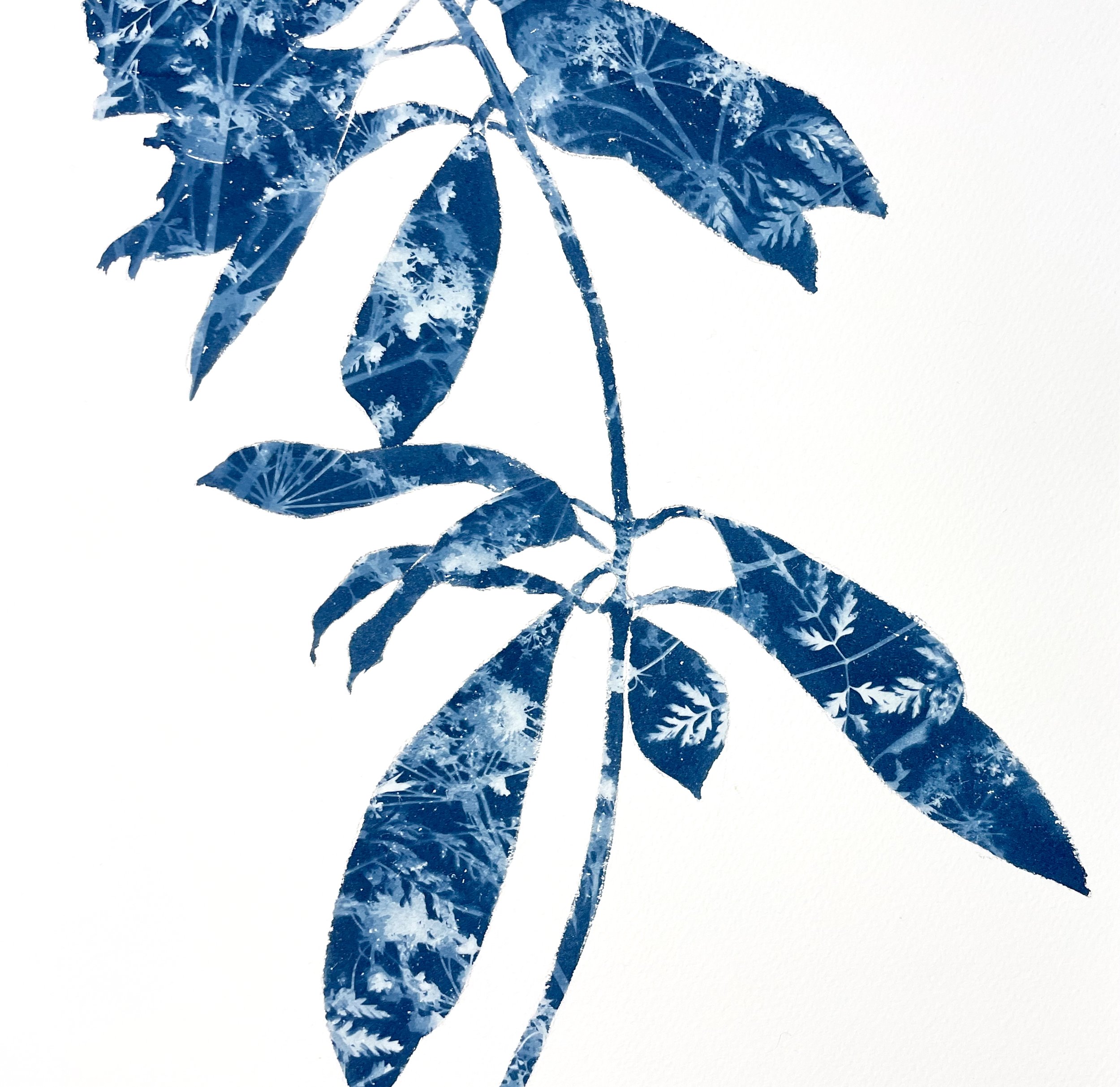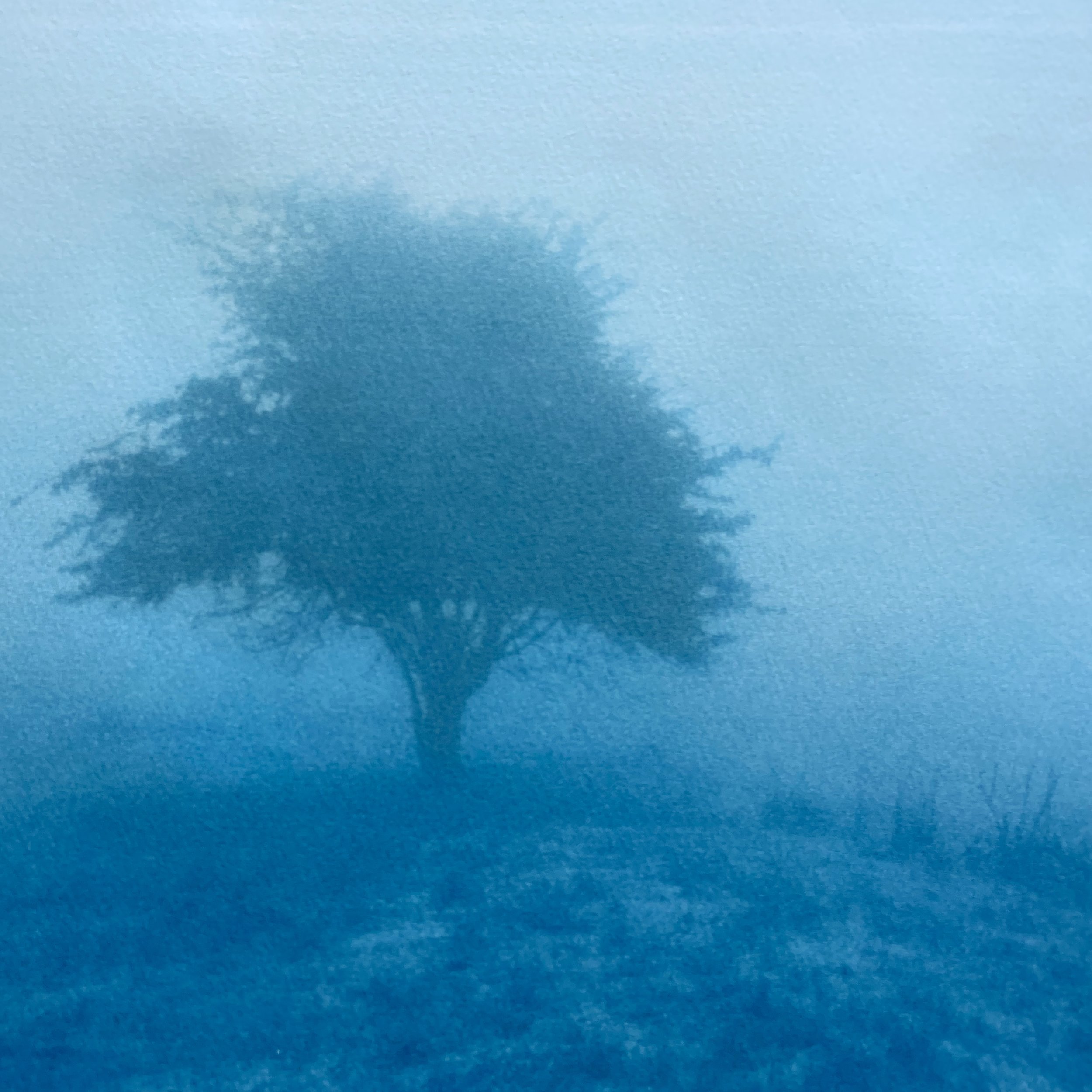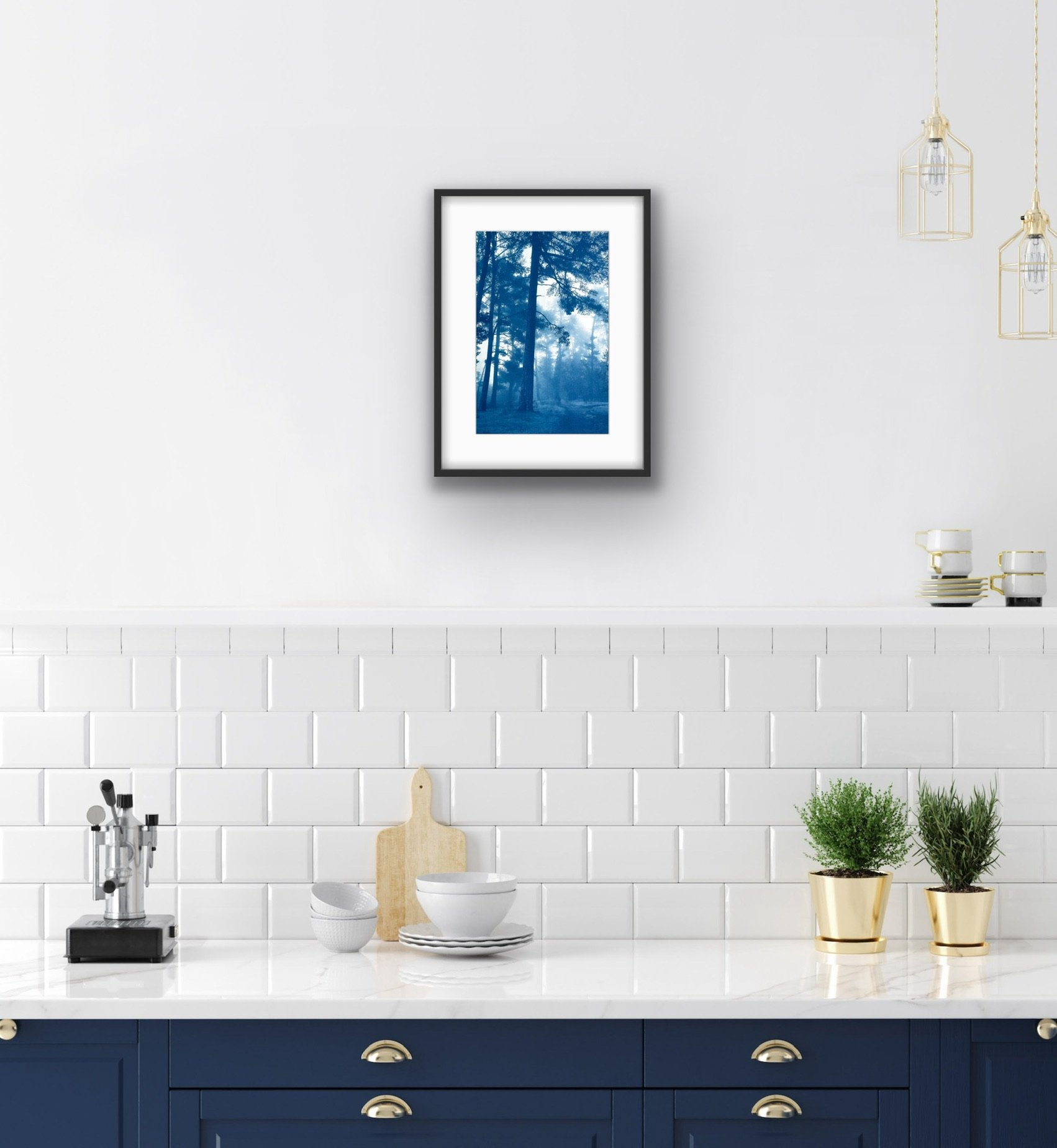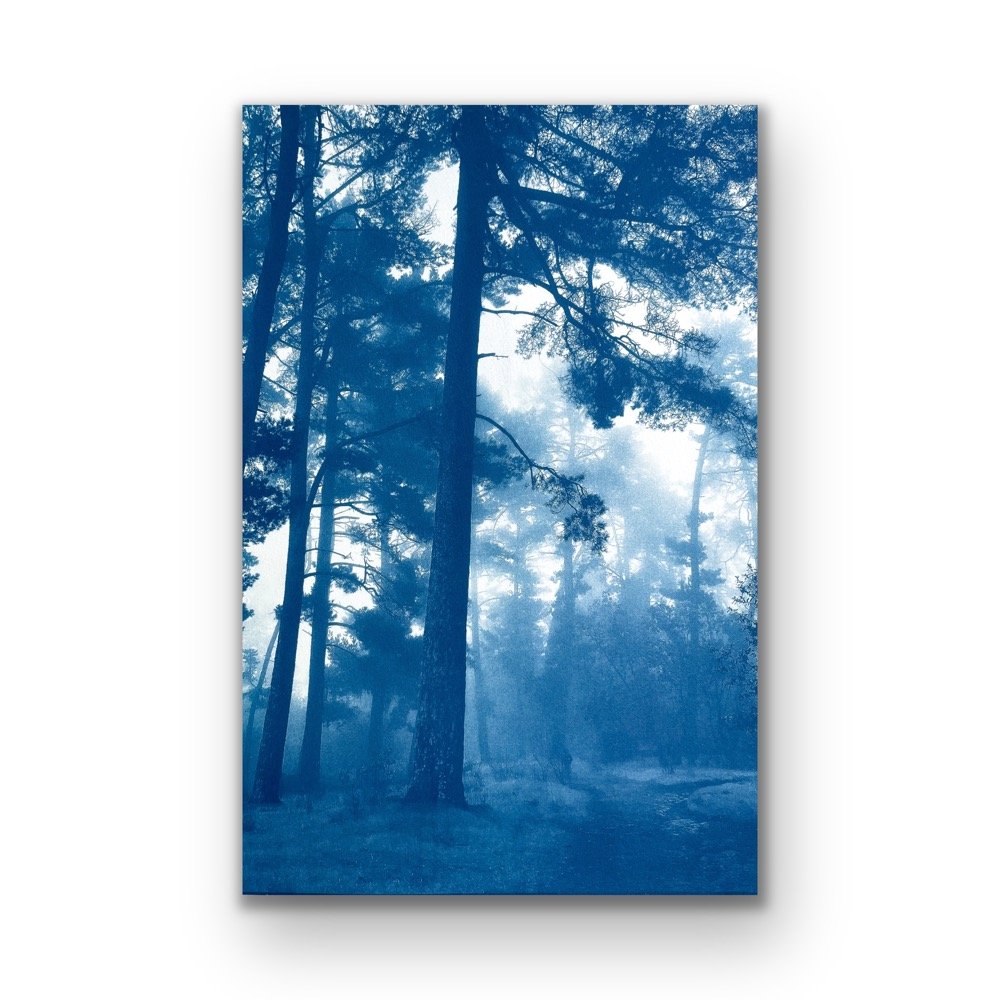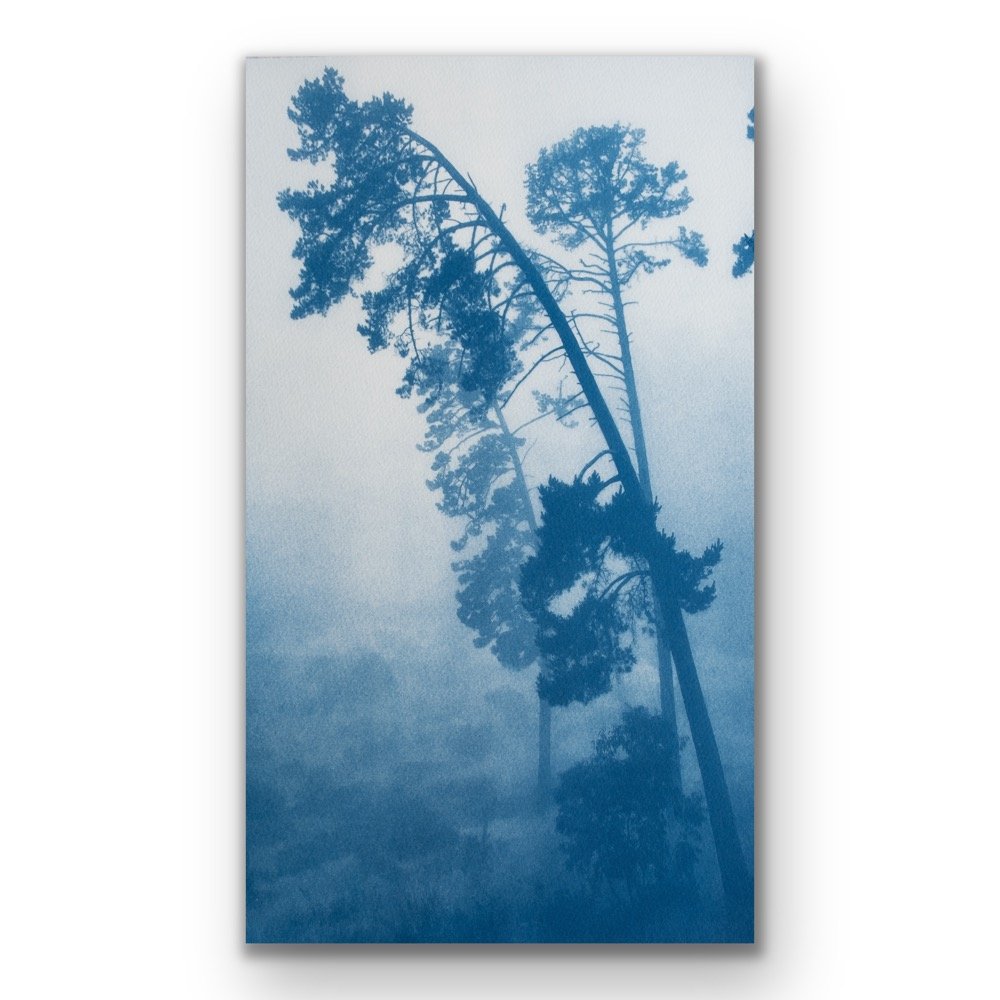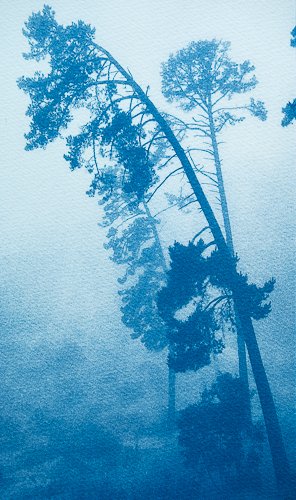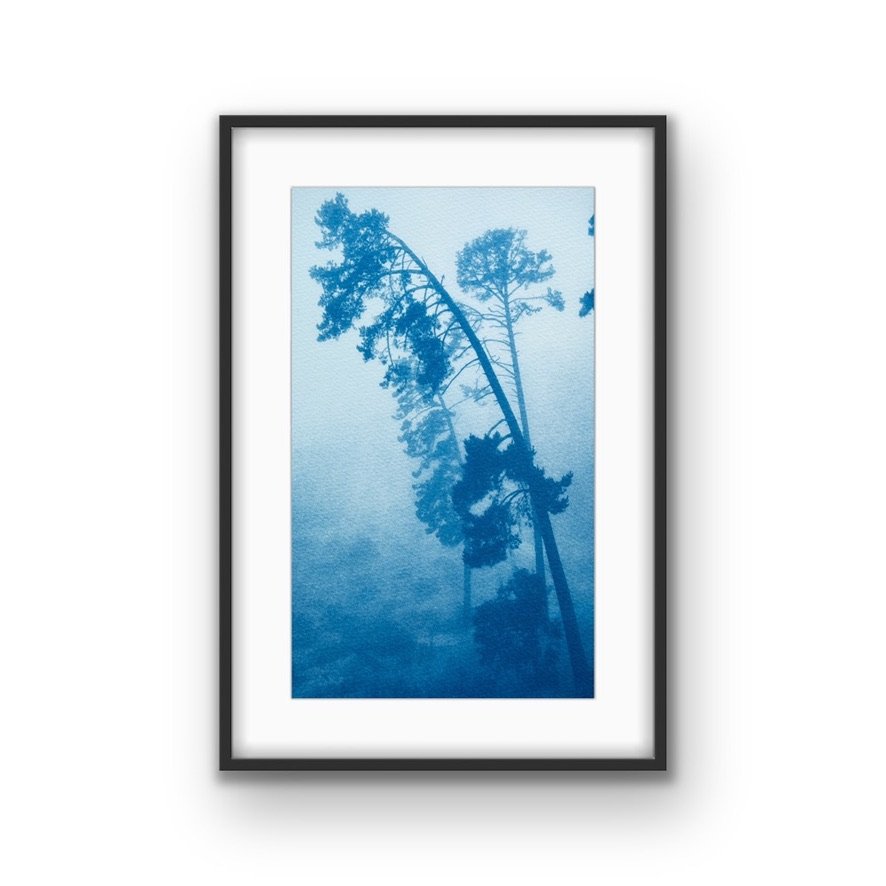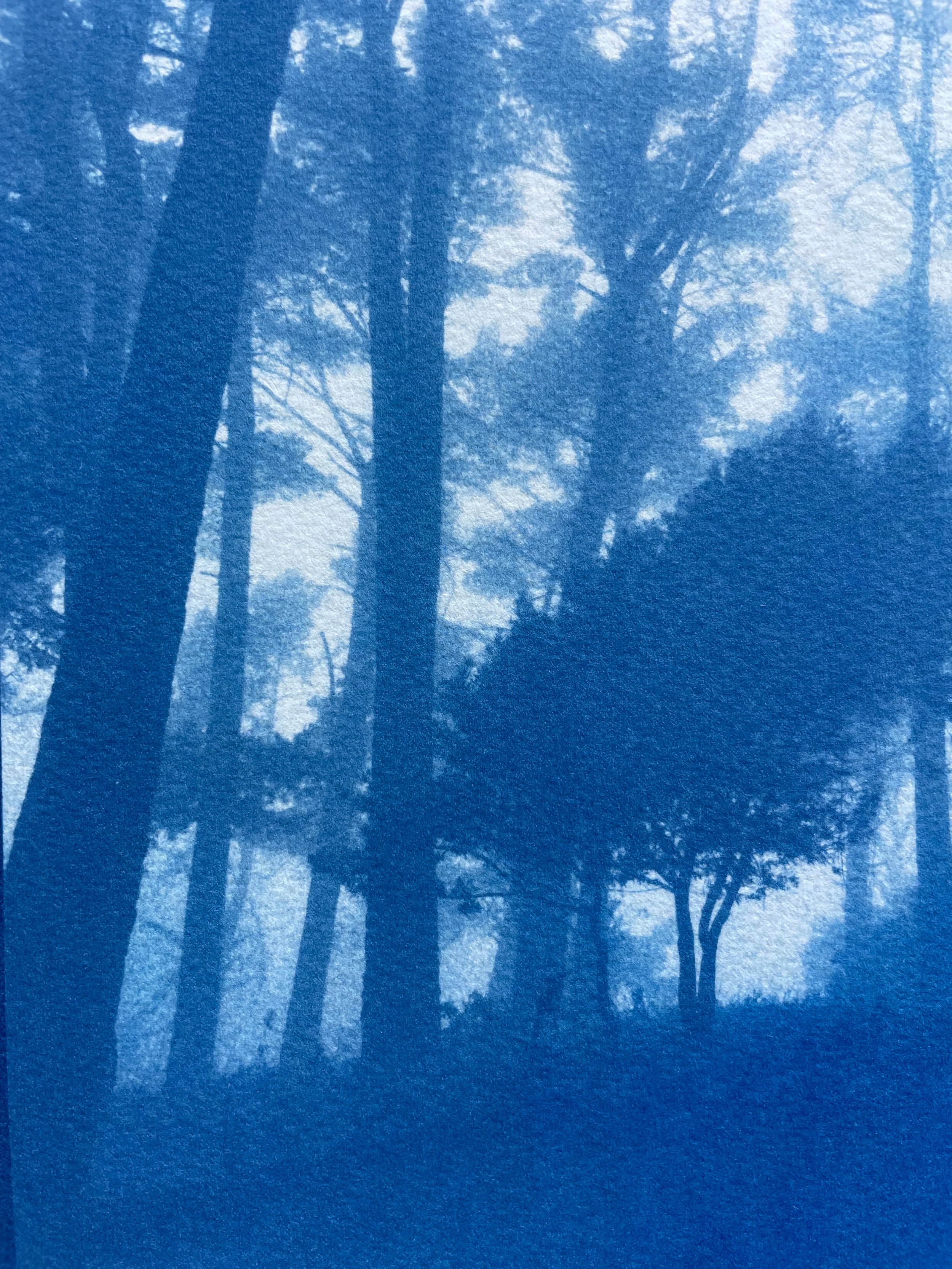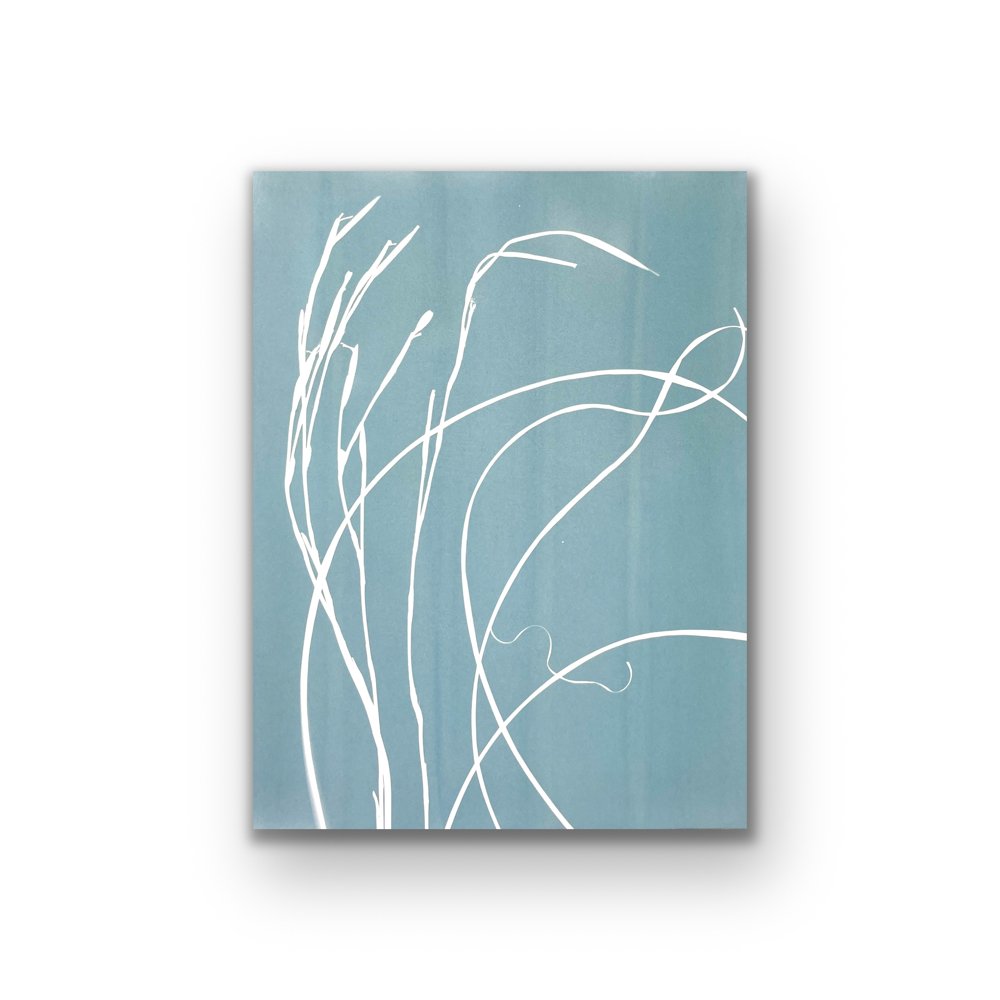 Image 1 of 3
Image 1 of 3

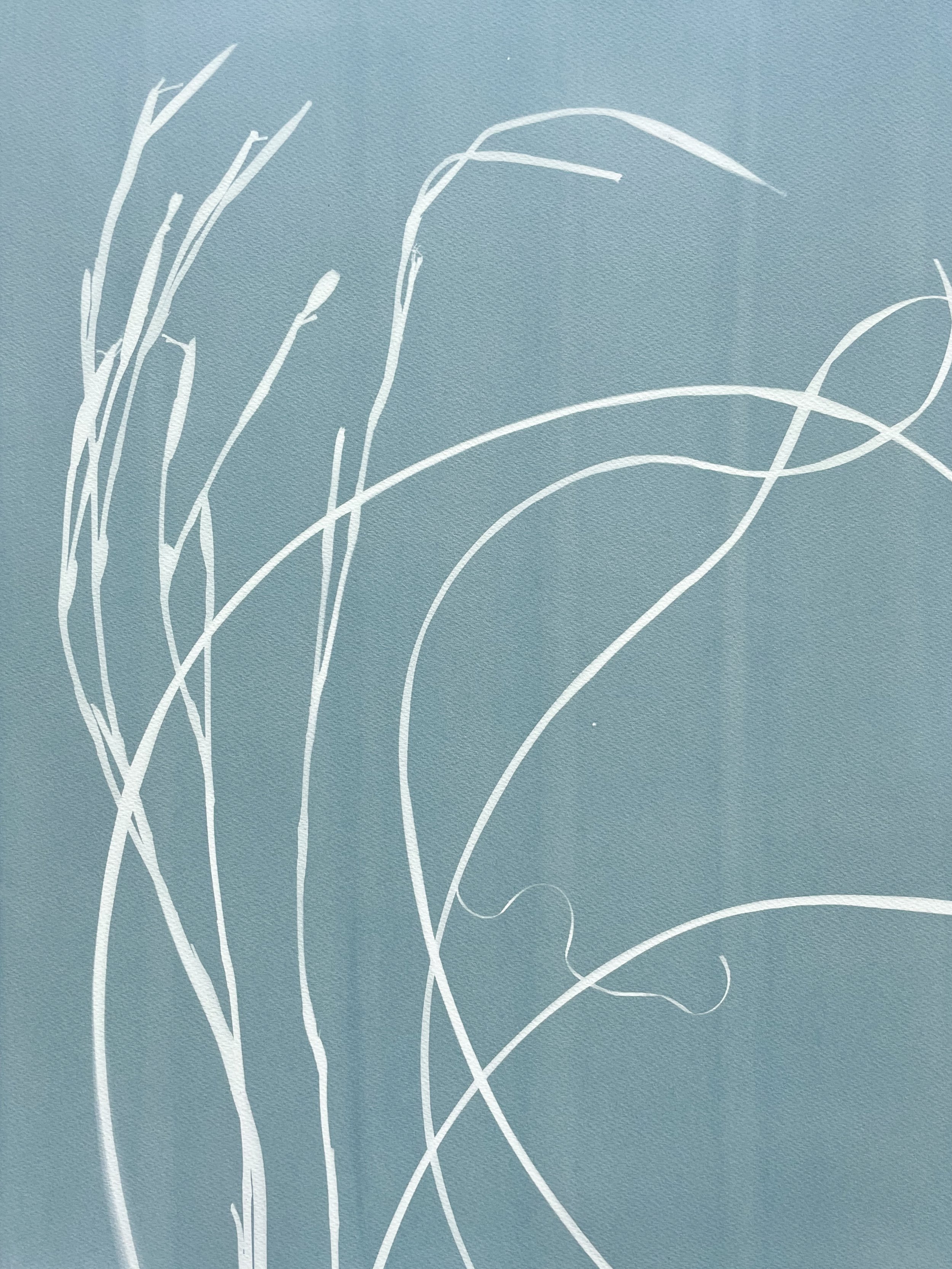 Image 2 of 3
Image 2 of 3

 Image 3 of 3
Image 3 of 3




Gray Iris IV (18 x 24 inch original cyanotype)
One 18 x 24 inch original cyanotype
Unframed. Sold separately.
Multiples of this series are shown together in case a person wanted to know how they would look side by side. If matted and framed to 30h x 24w, two would span 4 feet and three would span 6 feet or more (including gaps) horizontally.
Gray Iris I, II, III, IV and V are all the same size and color.
Three prints shown side by side in the second photo are :
Gray Iris III, Gray Iris IV, Gray Iris I (in order, from left to right).
Although this looks like a screen print or woodcut, it is actually a form of 19th-century photography, a cyanotype, also known as a sunprint or blueprint. The normal color of a cyanotype (blueprint) is dark blue and white. However, this slate gray cyanotype was made by dramatically altering the ratio of two photo chemicals in the mix before brushing it on the paper.
This pale blue-gray is a very difficult color to achieve with the cyanotype antique photographic process. I altered the ratio of the two photography chemicals in the traditional cyanotype photo emulsion to achieve different colors.
The fresh cut flowers used are the native Douglas Iris s that grow along the Pacific coast. Their impossibly long stems bend with their own weight, creating beautiful arches and lines in a monotype like this one.
One 18 x 24 inch original cyanotype
Unframed. Sold separately.
Multiples of this series are shown together in case a person wanted to know how they would look side by side. If matted and framed to 30h x 24w, two would span 4 feet and three would span 6 feet or more (including gaps) horizontally.
Gray Iris I, II, III, IV and V are all the same size and color.
Three prints shown side by side in the second photo are :
Gray Iris III, Gray Iris IV, Gray Iris I (in order, from left to right).
Although this looks like a screen print or woodcut, it is actually a form of 19th-century photography, a cyanotype, also known as a sunprint or blueprint. The normal color of a cyanotype (blueprint) is dark blue and white. However, this slate gray cyanotype was made by dramatically altering the ratio of two photo chemicals in the mix before brushing it on the paper.
This pale blue-gray is a very difficult color to achieve with the cyanotype antique photographic process. I altered the ratio of the two photography chemicals in the traditional cyanotype photo emulsion to achieve different colors.
The fresh cut flowers used are the native Douglas Iris s that grow along the Pacific coast. Their impossibly long stems bend with their own weight, creating beautiful arches and lines in a monotype like this one.











